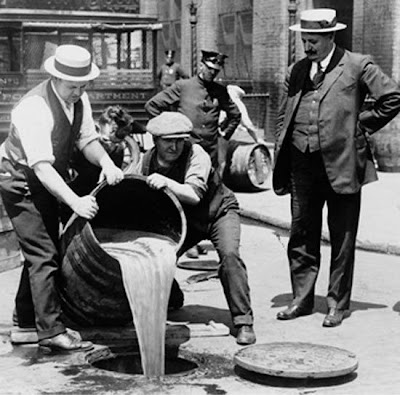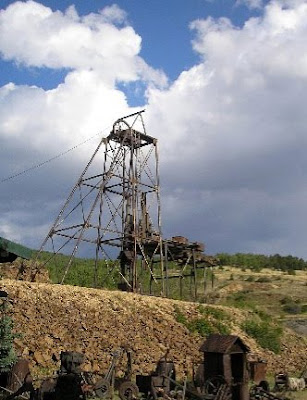
Reputed to have discovered gold in the Rocky Mountains in 1835, he was believed later by some to be responsible for the original Colorado gold strike.
By Rob Carrigan, robcarrigan1@gmail.com
Sometimes in history, it is difficult to get noticed. No credit where, perhaps, credit is due.
Colorado historians, in general, give recognition for the first discovery of gold in Colorado to a group of California-bound members of the Cherokee tribe from Georgia, and specifically Louis Ralston. That group was unimpressed enough with their findings that they continued on to the California gold fields. They kept track of their discovery, however, and rumors of it swirled around for years. Then, in 1858, William “Green” Russell, who had connections to the Cherokee tribe and had heard of the initial strike, organized a group of prospectors and began a search that eventually ended up near the mouth of Dry Creek on the South Platte River in what is now Englewood. Here they found a significant amount of gold in a placer, and with a little advertisement in the form of guide books, word of mouth, and tall tales, by 1859 the “Pikes Peak Gold Rush” was on.
But poor Eustache Carriere, nobody really remembers those nuggets he staggered into Taos with, back in the mid-1830s. They didn’t give him respect then, and he is lucky if he even gets a footnote today when we talk about the history of gold discovery in Colorado.
Born in Quebec, a native of La Rivifcre du Chene, the son of Baptiste and Marie (Lajeunesse) Carriere. He married at Florissant, Missouri, January 3, 1820, Josette Therese Jusseaume, daughter of
Rene Jusseaume, the Indian interpreter.
By 1812, Carriere began working for Manuel Lisa, according to the Encyclopedia of Frontier Biography by Dan L. Tharp.
“He was reputed to have discovered gold in the Rocky Mountains in 1835, this believed later by some to be the original Colorado gold strike.”
But that is about the extent of his 15 words of fame. Manuel Lisa, on the other hand, his boss for a time, is recognized as the founder of Fort Lisa on the Bighorn River in Montana, president of the Missouri Fur Company of St. Louis, sub-agent for all the Indian tribes on the upper Missouri, and pal to William Clark.
While working for Lisa, he was attached to a hunting party that ended up in the mountains of Colorado. Carriere, who according to lore had a history of being a bit of a straggler, remained behind when the hunting party set out for Taos without him.
“He was confident he could overtake his companions within a short time,” wrote Nolie Mumey in a paper for the Denver Westerners in August of 1961. “He took a long look at
La Grand Montagne, as a fix on his bearings, and thought he could take a short route and overtake them. While walking along the bank of a stream, he saw a shinny pebble in the sand, which he picked up and examined. Quickly realizing that it was pure gold, he made a further search and was rewarded with a large number of gold nuggets which he put in his trap-sac. He became lost and confused in his directions. He thought his companions would wait for him or send someone back to find him. All this they did, but he was not found.”
Because it was late in the fall, Carriere knew he couldn’t wait around forever, and burdened by the weight of the gold, he decided to keep only a few, hide the rest, and come back for them later. He then made his way through the San Luis Valley to the Rio Grande and on to Taos to meet up with his original party.
“He tried to explain his tardy arrival by showing them the nuggets he had retained and telling them he had become lost while searching the stream,” wrote Mumey.
“His companions made fun of him and said that he had the nuggets in his trap-sac for years, or that he must have obtained them from a party of Utes, or that his absence could be explained by being in the company of some young squaw.”
However, they were intrigued enough by the nuggets to help him organize a trip in the spring guided by Carriere back to
La Grand Montagne.
That spring, the searching party of trappers-turned-prospectors failed to locate the bonanza Carriere said he had seen the previous fall.
“Members of the party became angry, cursing and threatening him. They held a meeting, called him a liar and an imposter, and said they thought he was deliberately deceiving them as to the exact location of the gold. They decided to tie him to a tree and give him a whipping, which they did, then returned to their hunting grounds,” says Mumey in her paper.
After the failed gold hunting trip, Carriere was treated as an outcast, fool, or worse, and shunned by many in the trapping community. Eventually, burdened by hearing loss and years of loneliness, he lived out his old age in a log cabin built by Madame M.B. Chauteu in the woods north of Theresa’s Seminary, where 10th Street runs between Pennsylvania and Washington Avenues in Kansas City, and later moved on to St. Genevieve, Missouri, and eventually died there at the age of 90.
By the time of his death, the Colorado Gold Rush of 1859 had come and went. The rush of the “World’s Greatest Gold Camp” at Cripple Creek was creeping up on the horizon, and years of production from that district, and other gold discoveries in the San Juans have proven, over and over again, that Carriere had been right all along.
The mountain he called his
La Grand Montagne has never since been positively identified. It just possibly could be Pikes Peak.
###




























